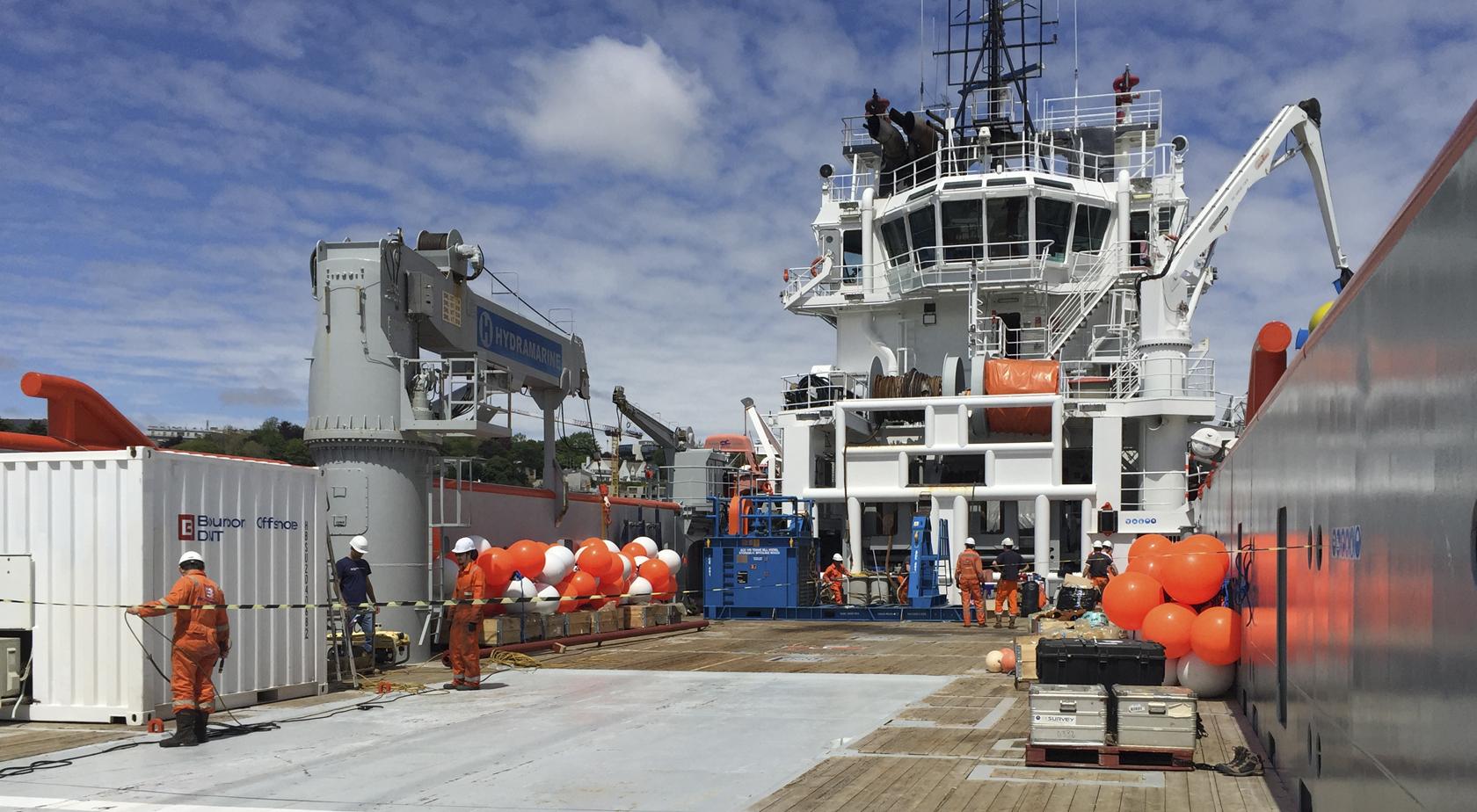
Technical and human performance
This past May 23th through 26th, at Pors Arlan, south of the island of Ushant1, BOURBON's teams, aboard the Argonaut, conducted the laying of a 2 km long submarine cable, prior to connecting the first tidal turbine to the French national electrical grid. On the vessel's bridge, were captains Jean-Luc Kerloch and Vincent Lodeho. The latter, a consultant captain tells us about the operation from an insider's perspective.
OFFshore: what were the stakes of this operation?
Vincent LODEHO: the group now has widely-recognized expertise in the offshore oil and gas world. The installation of a wind turbine off the coast of Portugal showed us that we could successfully position ourselves in the Marine Renewable Energies (MRE) sector. Our participation in the Sabella project provides further evidence of this.
OFFshore: This was the 1st such operation for BOURBON, and therefore for you. How did you find it?
V.L.: Even if it was a first, in fact, it still had strong connections with what we usually do in offshore oil and gas, especially in terms of safety. The procedures were quite similar, and the operation could not begin until all safety conditions were met, for crews as well as for equipment.
OFFshore: Can we compare the wind turbine towing operation off Portugal with the laying of the cable for a tidal turbine?
V.L.: Both technologies are related to MRE but operationally, it was very different. For the wind turbine, we had to deal with quite considerable chain lengths and tensions, while at Ushant, we had to take extreme precautions for handling the cable, which could have been damaged easily and had to be positioned at the bottom of the water. In the end, it was a very delicate, precise job in a rather aggressive environment.
OFFshore: Why did the environment make the operation difficult?
V.L.: We had a very narrow weather window, and we also had to take into account the tidal range and current, particularly strong in this area - from 5 to 10 knots, which is considerable. Since the cable was being pulled from shore by tractors, the ship had to be very near the coast but at the same time monitor the cable tension and positioning.
OFFshore: What was the key moment of the operation for you?
V.L.: Without hesitation, the positioning of the cable on the bottom, in a very short period of time. We had to be ready in a maximum of 1:15 hours , which left little room for error and therefore required great preparation beforehand. The challenge was this: having the crews ready, the equipment operational, and once the "Go" is given, going through with the operation. In the event of problems, it was not possible for us to stop laying the cable and start again later. The weather conditions would not have allowed it.
OFFshore: How did the preparation go?
V.L.: For several months, our teams, onshore engineers, and also the vessel's crew, studied the feasibility of the operation, in close collaboration with Sabella, who was very attentive to our expertise and our comments. Our client was able to benefit from our offshore experience, particularly in terms of safety procedures. Today, if we had to do it all over again, taking into account the experience of this first operation, we would probably just make a few minor adjustments, which attests to the quality of work performed by our engineers beforehand.
OFFshore: The reasons for success?
V.L.: BOURBON has demonstrated, through our massive human and material involvement, that we have acquired the resources in line with our ambitions and the client was sensitive to that. The vessel's crew usual normally consists of a dozen seafarers. For this operation, counting the crew and the client, there were thirty of us on board! Our engineers were on hand to oversee the operation, some posts on the vessel were doubled - thus there were two captains, 2 bosuns, 2 oilers, etc. And the vessel, the Argonaute, also thoroughly met expectations. With its dynamic positioning system, very large payload and personnel capacity, 2 cranes and a deck measuring over 400 m2, it's a highly flexible AHTS vessel that we could set up however we wanted in order to conduct this mission.
1 The operation took place in the Fromveur, east of the island of Ushant (Brittany, Western France), specifically in the cove of Arland.
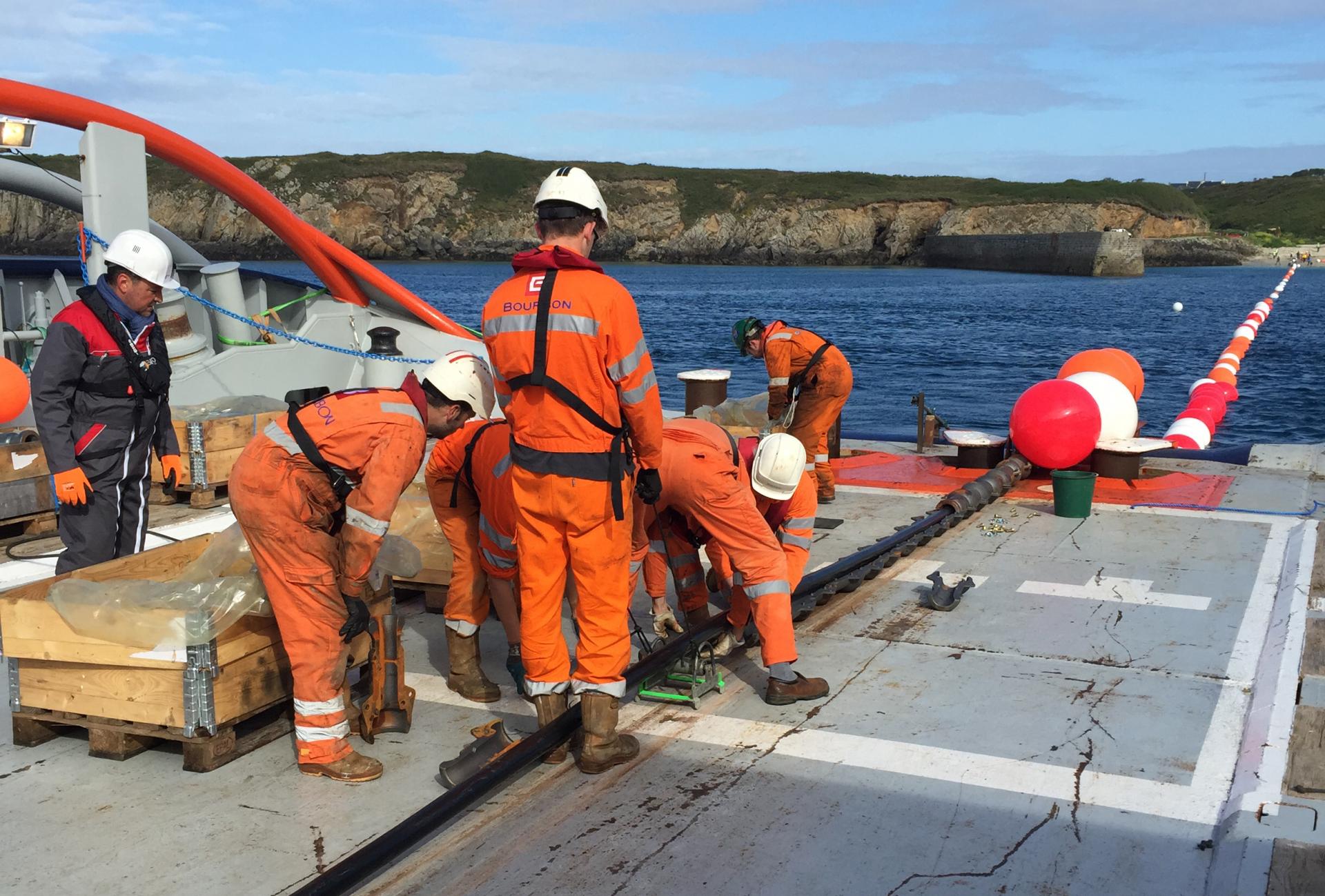
The Sabella D10 tidal turbine project - Boyancy installation
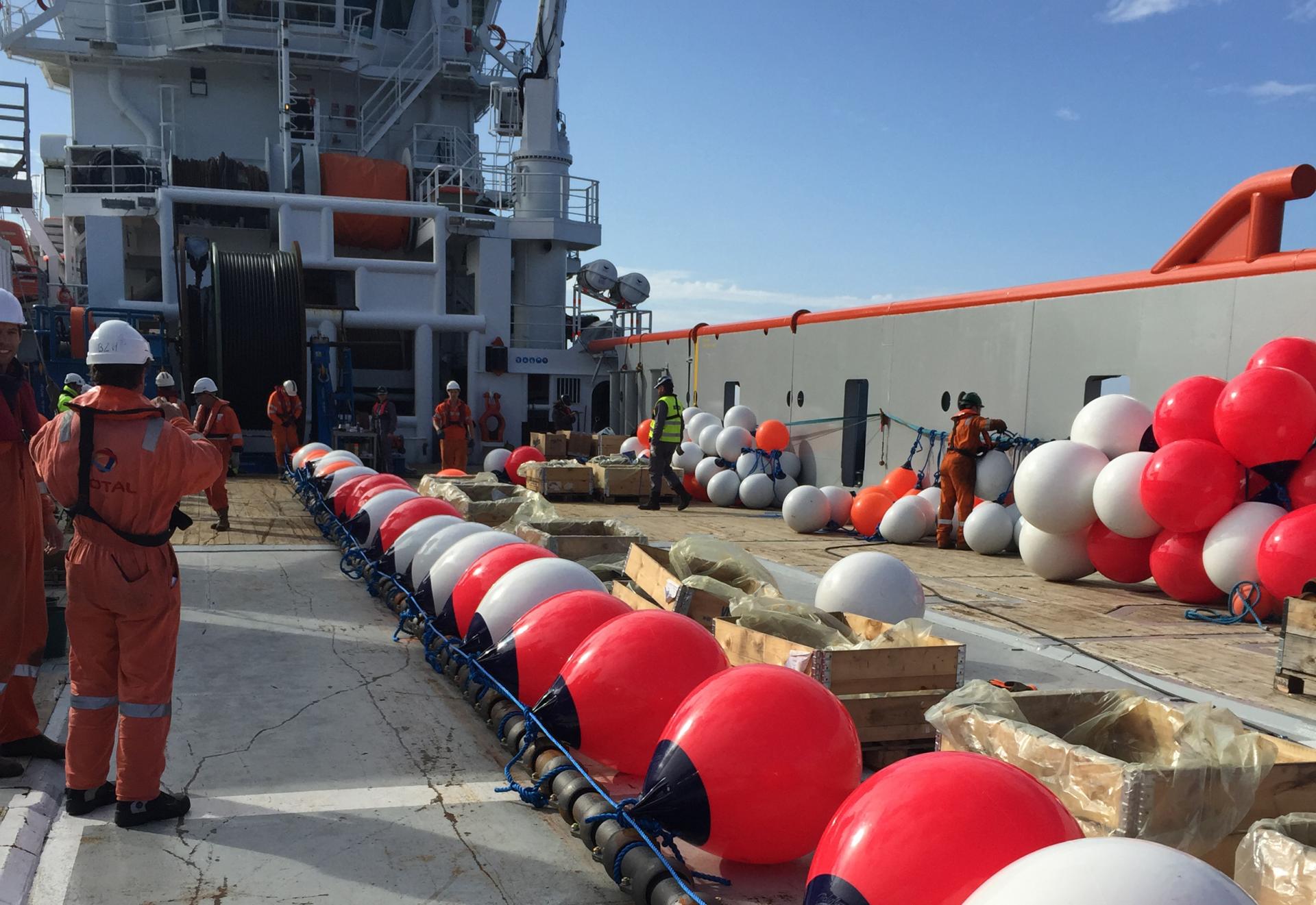
The Sabella D10 tidal turbine project - Boyancy installation
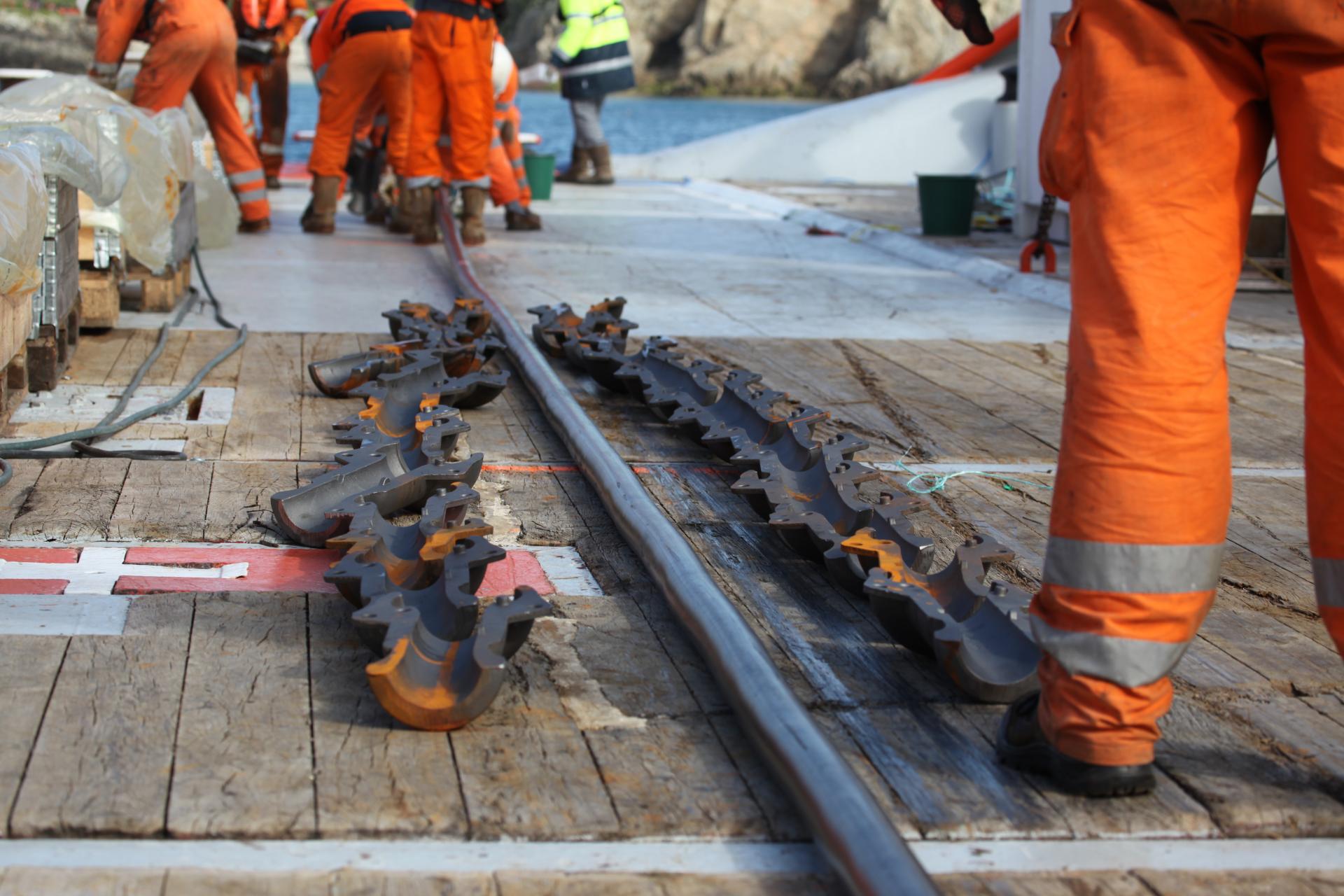
The Sabella D10 tidal turbine project - Tha ballast of cable
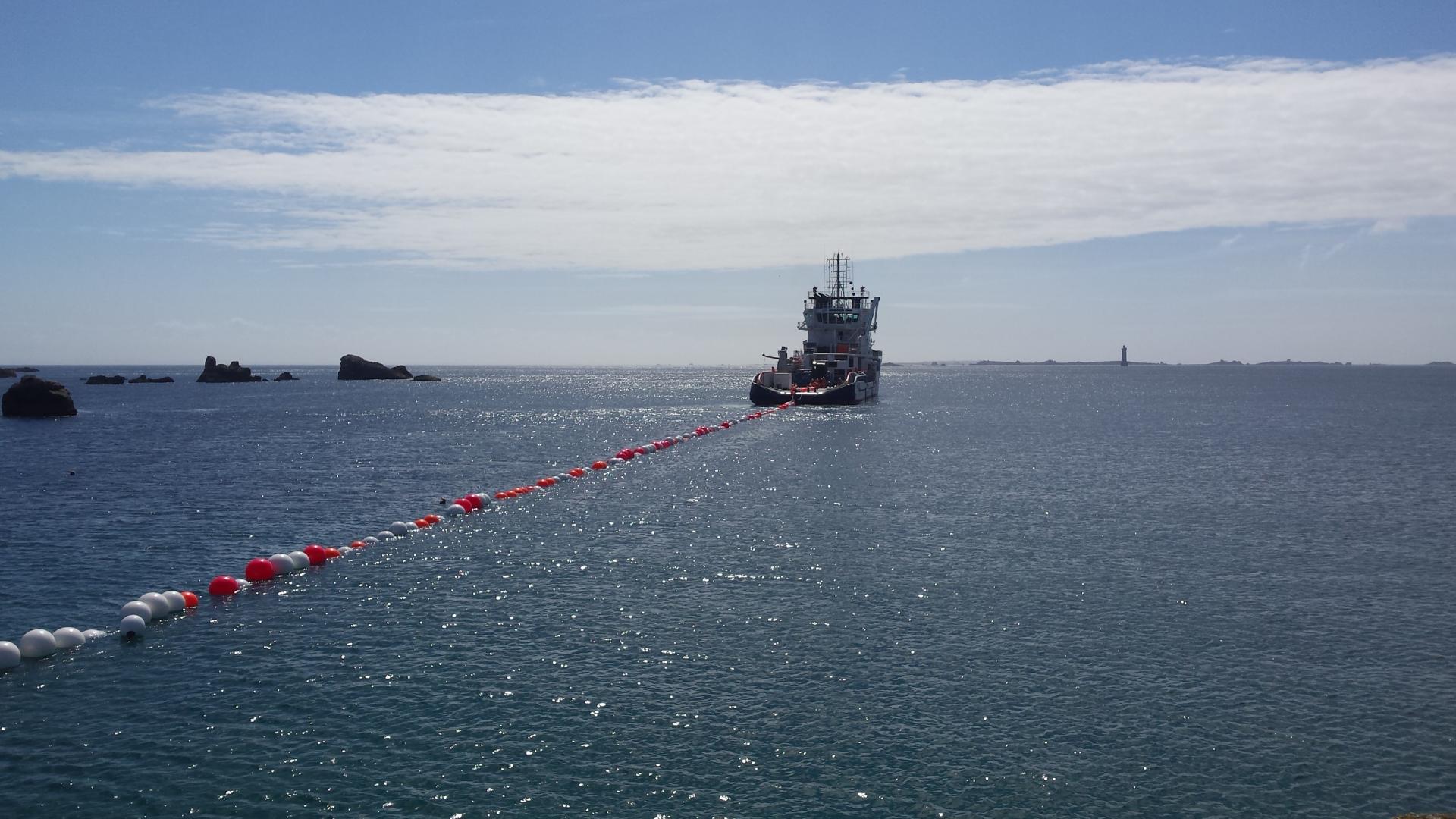
The Sabella D10 tidal turbine project - Connecting floating cable to shore
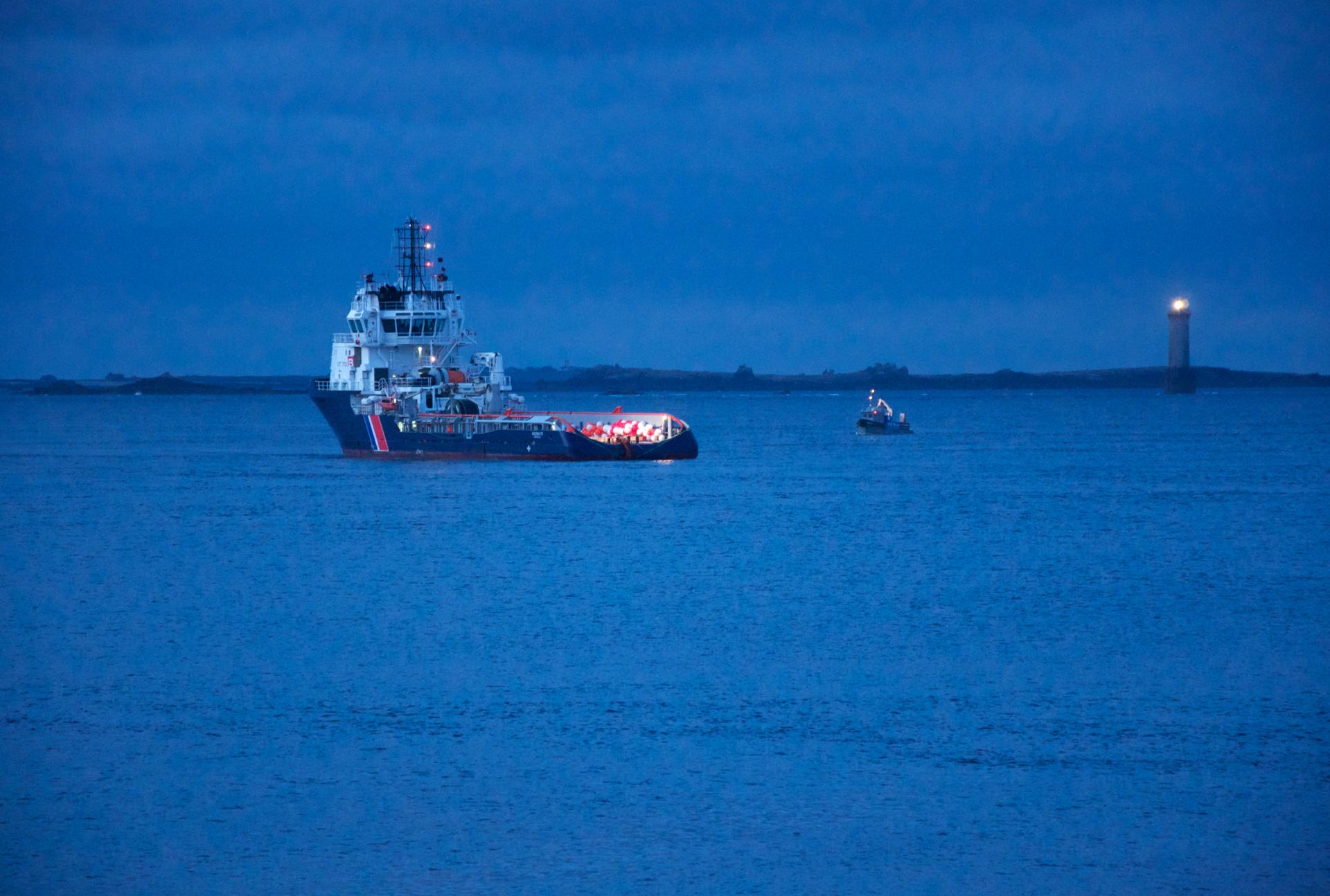
The Sabella D10 tidal turbine project - End of operation


